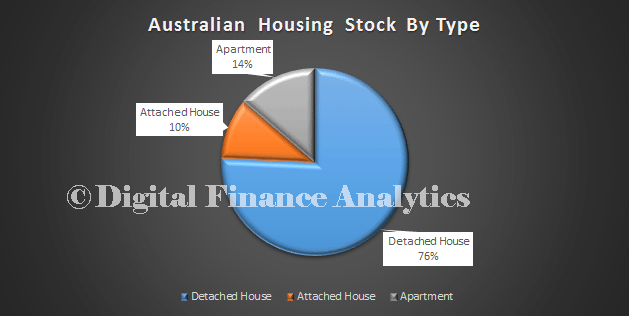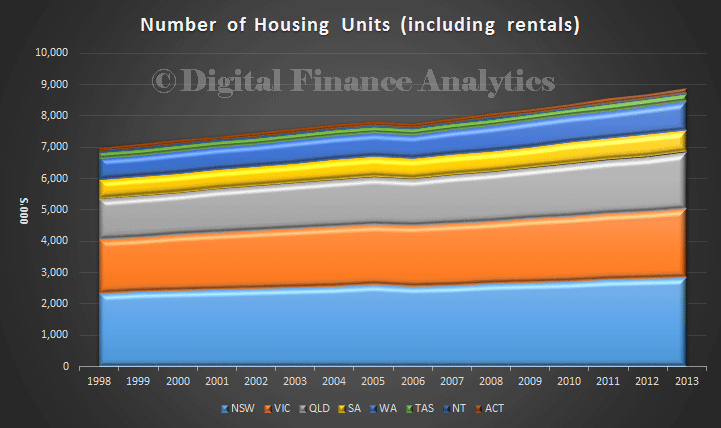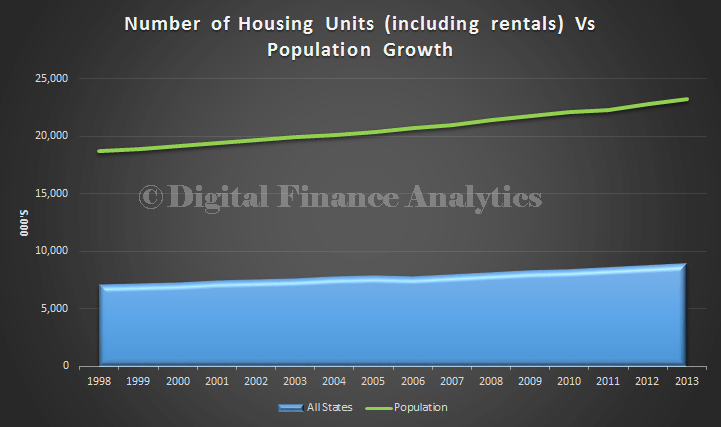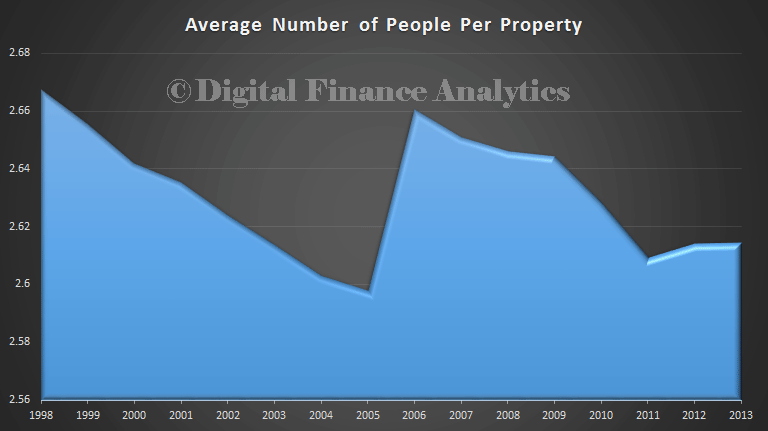
By Martin North, cross-posted from the Digital Finance Analytics Blog
Underlying yesterdays post on the house build gap, was data on population growth and the current Australian housing stock. I had several requests for more data so I outline some of our assumptions. DFA estimates that there are 8.8 million residential units in Australia, 76% are detached, 14% apartments and 10% attached houses. As we highlighted previously, more units are now being built than houses, so we will see these ratios change.
 Looking at the state growth in housing stock, we see that after a pause in 2005, and 2006 (when building costs and loan rates were high), housing stock is growing, thanks to new builds and conversions. A little over 30% of these properties are rented, and a further 25% are owned outright without mortgage, though the proportion with a mortgage has been steadily increasing, as has the size and duration of the average mortgage.
Looking at the state growth in housing stock, we see that after a pause in 2005, and 2006 (when building costs and loan rates were high), housing stock is growing, thanks to new builds and conversions. A little over 30% of these properties are rented, and a further 25% are owned outright without mortgage, though the proportion with a mortgage has been steadily increasing, as has the size and duration of the average mortgage.
 We can overlay population growth on the housing stock data, and we see population growth slightly ahead of housing stock through some of the trend years.
We can overlay population growth on the housing stock data, and we see population growth slightly ahead of housing stock through some of the trend years.
 To bring this home, we can look at the average number of people per property. We see a fall during the early 2000′s then a series of reversals, with a current estimate at 2.614. Lots going on here, including changes to the birth rate, mortality rates and migration. In comparison, we estimate the UK average is 2.3, and the US average per housing unit is 2.1.
To bring this home, we can look at the average number of people per property. We see a fall during the early 2000′s then a series of reversals, with a current estimate at 2.614. Lots going on here, including changes to the birth rate, mortality rates and migration. In comparison, we estimate the UK average is 2.3, and the US average per housing unit is 2.1.
 Just a warning, these averages are not the same as the average number of people per household, because the distribution of people in households varies considerably and some have more than one home. The US average per household is 2.6, the UK 2.5, and Australia 2.6. The ABS forecast a reduction to 2.3 by 2026.
Just a warning, these averages are not the same as the average number of people per household, because the distribution of people in households varies considerably and some have more than one home. The US average per household is 2.6, the UK 2.5, and Australia 2.6. The ABS forecast a reduction to 2.3 by 2026.

